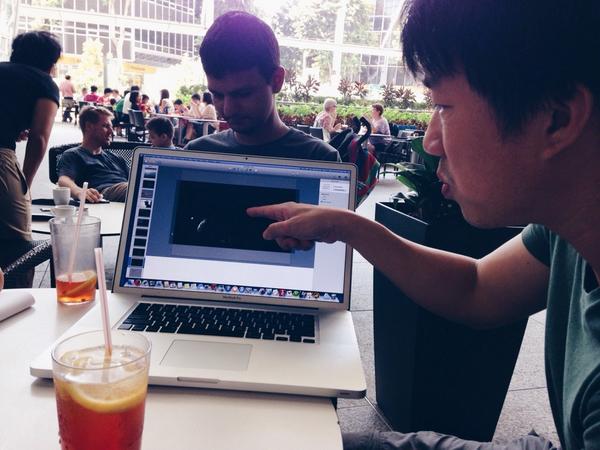 |
| [From left] Farah Wardani, Vera Mey and Ahmad Mashadi. |
About the moderator
Ahmad Mashadi is currently the Head of the National University of Singapore (NUS) Museum. Before joining the NUS Museum, Ahmad served as Senior Curator at the Singapore Art Museum focusing on Southeast Asian Art. Recent exhibitions curated include Archiving Apin (2013) and Camping and Tramping through the Colonial Archive: The Museum in Malaya (2011).
About the speakers
Vera Mey is a
curator at the Centre for Contemporary Art Singapore (CCA), a research centre
of Nanyang Technological University. She was Assistant Director of AUT
University’s ST PAUL St Gallery in Auckland, New Zealand from 2011 - early 2014
where she also convened the AUT University Master of Arts Management Curatorial
Strategy program. For 2013, Vera was curator in residence at Arts Initiative
Tokyo, Japan. Last December with Erin Gleeson, Sa Sa Bassac, Phnom Penh she
curated the non-productive nomadic residency FIELDS: an itinerant
inquiry across the Kingdom of Cambodia (2013). This involved a group
of 17 artists, curators, and researchers traveling together for 20 days
questioning the intersection between contemporaneity, archaeology and the
politics of memory rooted in mutual unknowing within the context of
contemporary Cambodia. She completed her Masters in Museum & Heritage
Studies from Victoria University of Wellington, New Zealand (2010) and most
recently was a participant on the 8th Berlin Biennial Young Curators Workshop
(2014).
Farah Wardani completed her MA in Art History (20th
Century) from the Department of Historical & Cultural Studies,
Goldsmiths College, London, UK, in 2001. She has been active as a
teacher, researcher, writer, curator and art organizer since 2001 in her home
country, Indonesia. She is the co-author of a book titled Indonesian Women Artists: The Curtain Opens
(Indonesian Fine Arts Foundation, 2007). Her recent and ongoing projects
include being the consulting curator for the exhibition Indonesian Eye: Fantasies & Realities at Saatchi Gallery,
London, 2011; and Artistic Director for Biennale Jogja XII 2013. From 2007
until present she positions as the executive director of Indonesian Visual Art
Archive (IVAA) in Yogyakarta, Indonesia, with works include the IVAA Digital
Archive http://archive.ivaa-online.org/, the first digital archive of
contemporary art in the country.
Curatorial Roundtable 03 | in photos
Curatorial Roundtable 03 | in video




















